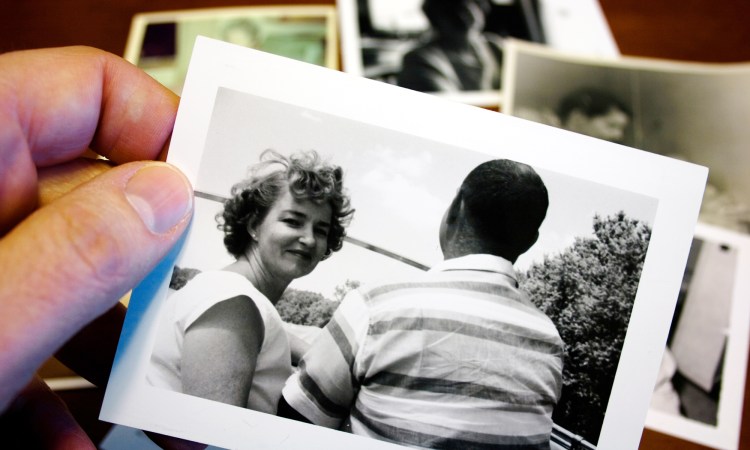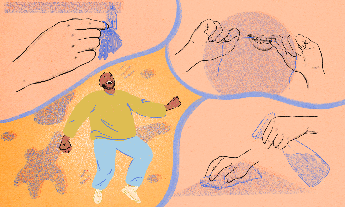
Death is a part of life, and so are the funerals and memorial services held to mark an individual’s passing. But when we’re called upon to speak at these occasions, many of us are at a loss for words. Here are some basic guidelines for writing a eulogy, from palliative specialist BJ Miller and writer Shoshana Berger.
When you leave a memorial or funeral having imagined the fullness of the person being memorialized, you know the speakers got it right. The first rule for eulogists is that this is not about them. It is about paying close attention to the way a person lived and drawing out the most meaningful, memorable bits.
Summing up a life in writing isn’t easy, but it’s an important exercise that serves a dual purpose. It obliges the writer to call up memories — which is a way to honor the person and process one’s loss — and it creates an atmosphere of deep community with other grievers. Do your best to be honest in your eulogy, instead of presenting some idealized portrait that others won’t recognize. Steve Schafer, a pastor who helps people write eulogies, offers the following guidelines.
• Aim for 1,000 words, or about six to seven minutes’ speaking time.
• Always write down what you’re going to say, even if you plan to abandon your notes. It’s a good way to gather your thoughts and make sure you’re not missing any important details.
• Be personal and conversational. This isn’t a formal speech; it’s an appreciation.
• If you aren’t introduced by the emcee or by another speaker, do so yourself and say what your relationship to the person was.
• Start with a story about the person. People come alive through specific anecdotes.
• Be humorous. The best eulogies are respectful and solemn, but they also give mourners some comic relief. A bit of roasting is fine if it suits who the person was and the family has a sense of humor.
• Close your eulogy by directly addressing the person who died, something like “Joe, thank you for teaching me how to be a good father.”
Here’s an example of a great eulogy, written by a woman for her grandmother. Before each section, we’ve explained what she’s done.
[Start with an introduction that paints a portrait of the person’s character. Beginning with your memories of the person is a great way to go. Try for descriptive details — the Almond Joy moment below — rather than broad, abstract statements such as “She was kind” or “She was a loving caretaker.”]
From my earliest memories, she is right by my side, taking me on walks through the miniature golf course near our house, dutifully preparing my odd lunch requests for cheddar and mayo sandwiches and sneaking me Almond Joy candy bars away from the gaze of my mom.
[Draw out important moments that signify lifelong connection.]
I was so close to my grandma that around the age of 23 I grew increasingly anxious that she might not live to attend my wedding unless I hurried up. Well … she did live to attend that wedding, and also to witness my first divorce, my second marriage, and to know and love my two children. She liked Jeff from the beginning and one day before we were engaged, she boldly told him, “Well, you better put a ring on it!” quoting Beyoncé without knowing the reference.
[Talk about advice passed down — values, sayings and anecdotes that capture the person.]
The most remarkable qualities about my grandma as she aged were her gratitude and her humility. She often told me to live for myself and not worry about her — to work, focus on my family, and come visit when I had time. She loved every minute of our visits but never pushed for more.
I once asked her if I should have a third child and she replied, “Why, honey? You already have the perfect family.” The most important things to my grandma were family and faith; she didn’t care for material possessions. In fact, she was known for giving items away because “there was someone who was more in need.” This selflessness and service for others leave a legacy that I will try to model for my children. Time with her family was the greatest gift and even with that, she was not greedy.
[Thank-yous to other family members who helped with caretaking.]
I am deeply thankful to our family who cared for, loved her, and relished spending time with my grammie as she aged. Knowing she had Adie to take her to church and lunch every Sunday punctuated her week with a joyful event she truly looked forward to. Dave and Aileen always arrived with a box of her favorites See’s Candies, essentially confirming the Pavlovian model as she began to drool as soon as they walked in the door. And to my mom, who cared for my grandma for the last 10 years of her life with compassion and unrivaled duty. I thank her not only for giving back to her mom, but for modeling care and respect for our elders.
[The eulogy goes on a bit longer and then ends with a closing quote, poem, reading, or other good-bye.]
“When my friends began to have babies and I came to comprehend the heroic labor it takes to keep one alive, the constant exhausting tending of a being who can do nothing and demands everything, I realized that my mother had done all of these things for me before I remembered. I was fed; I was washed; I was clothed; I was taught to speak and given a thousand other things, over and over again, hourly, daily, for years. She gave me everything before she gave me nothing.”
— Rebecca Solnit, from her book The Faraway Nearby
Excerpted from the new book A Beginner’s Guide to the End: Practical Advice for Living Life and Facing Death by BJ Miller and Shoshana Berger. Copyright © 2019 by BJ Miller and Shoshana Berger. Reprinted by permission of Simon & Schuster, Inc, NY.
Watch his TED Talk now:











